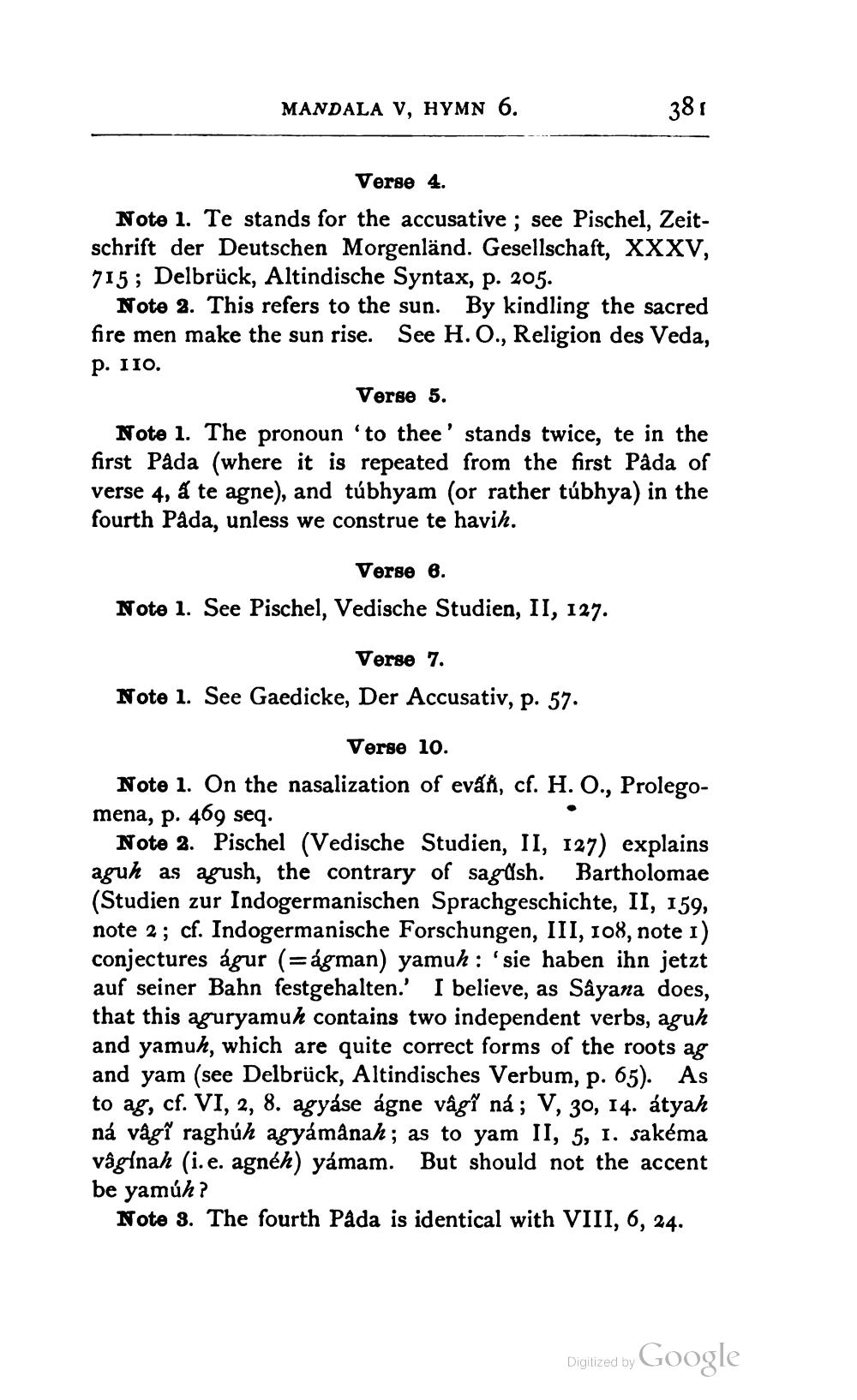________________
MANDALA V, HYMN 6.
381
Verse 4. Note 1. Te stands for the accusative ; see Pischel, Zeitschrift der Deutschen Morgenländ. Gesellschaft, XXXV, 715; Delbrück, Altindische Syntax, p. 205.
Note 2. This refers to the sun. By kindling the sacred fire men make the sun rise. See H. O., Religion des Veda, p. 110.
Verse 5. Note 1. The pronoun 'to thee' stands twice, te in the first Pada (where it is repeated from the first Pâda of verse 4, a te agne), and túbhyam (or rather túbhya) in the fourth Pada, unless we construe te havih.
Verse 6.
Note 1. See Pischel, Vedische Studien, II, 127.
Verse 7. Note 1. See Gaedicke, Der Accusativ, p. 57.
Verse 10. Note 1. On the nasalization of evák, cf. H. O., Prolego
mena, p. 469 seq.
Note 2. Pischel (Vedische Studien, II, 127) explains aguh as agush, the contrary of sagash. Bartholomae (Studien zur Indogermanischen Sprachgeschichte, II, 159, note 2 ; cf. Indogermanische Forschungen, III, 108, note I) conjectures águr (=ágman) yamuh : 'sie haben ihn jetzt auf seiner Bahn festgehalten.' I believe, as Sâyana does, that this aguryamuh contains two independent verbs, aguh and yamuh, which are quite correct forms of the roots ag and yam (see Delbrück, Altindisches Verbum, p. 65). As to ag, cf. VI, 2, 8. agyáse ágne vâgî ná; V, 30, 14. átyah ná vågî raghúh agyamanah; as to yam II, 5, 1. sakéma våglnah (i.e. agnéh) yamam. But should not the accent be yamúh?
Note 3. The fourth Pada is identical with VIII, 6, 24.
Digitized by Google




